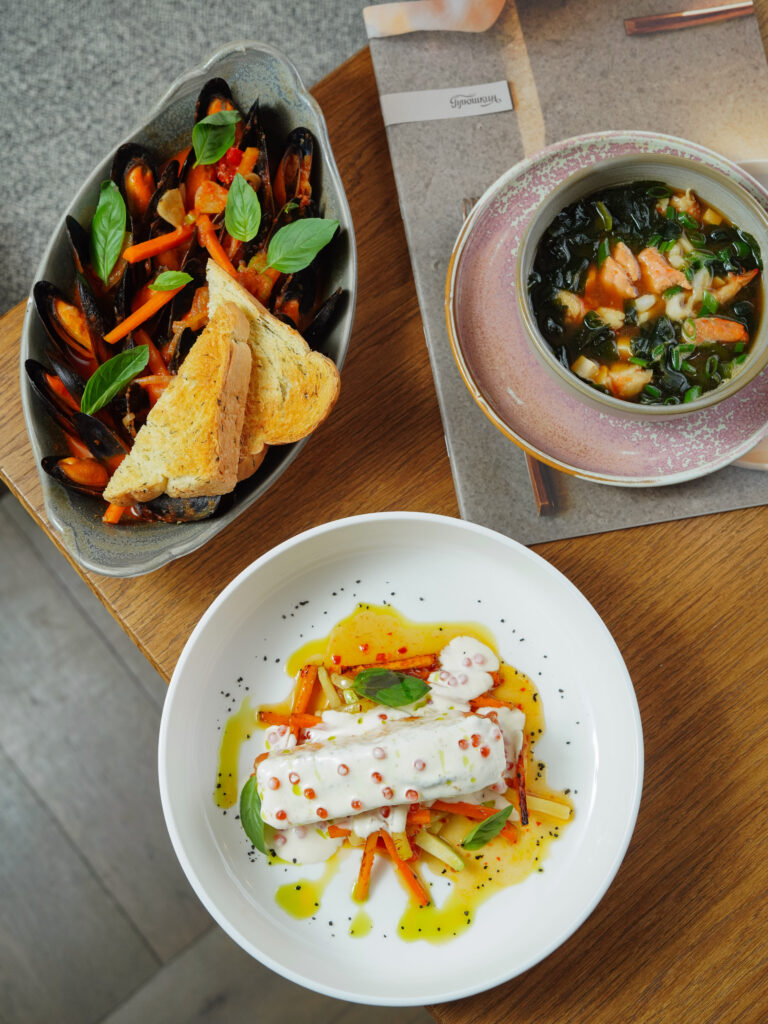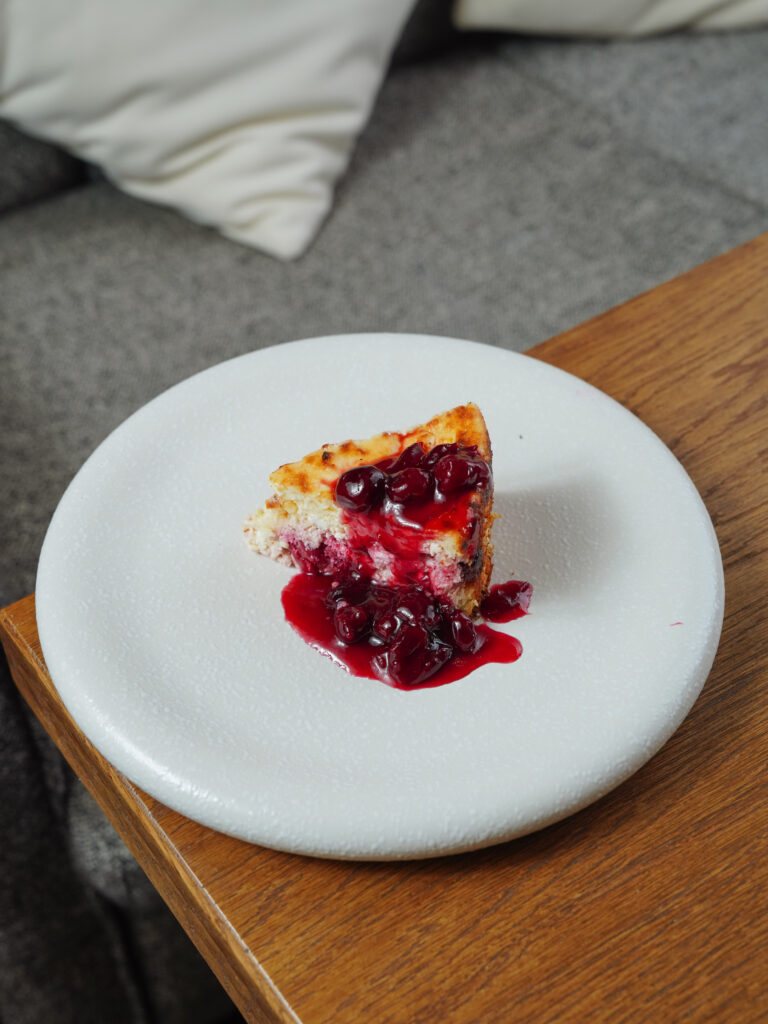The article titled “Meat Temperature Chart and Food Safety Tips” provides readers with essential information on cooking temperatures and safety guidelines for various types of meat and food. The author emphasizes the importance of following proper cooking temperatures to ensure food safety and prevent foodborne illnesses. The article includes a comprehensive chart that outlines the recommended temperatures for different types of meat, poultry, seafood, eggs, casseroles, and leftovers. It also offers tips on safe storage of cooked food and leftovers, as well as guidelines for reheating. Additionally, the article provides advice on checking the accuracy of thermometers and maintaining the correct temperatures in refrigerators and freezers. By following these guidelines, readers can ensure that they cook and store food safely, protecting the health of themselves and their families.
Meat Temperature Chart

Steak/Beef
When cooking steak or beef, it is important to ensure that the meat reaches a safe internal temperature to kill any harmful bacteria. The following are the recommended internal temperatures for different levels of doneness:
- Rare: The meat should reach an internal temperature of 120°F to 125°F (48.9°C to 51.6°C).
- Medium-rare: The meat should reach an internal temperature of 130°F to 135°F (54.4°C to 57.2°C).
- Medium: The meat should reach an internal temperature of 140°F to 145°F (60°C to 62.8°C).
- Medium-well: The meat should reach an internal temperature of 150°F to 155°F (65.5°C to 68.3°C).
- Well done: The meat should reach an internal temperature of 160°F (71.1°C) and above.
It is important to note that the lower temperatures for rare and medium-rare meat are not recommended by the USDA, as they may not kill all harmful bacteria.
Lamb
When cooking lamb, the recommended internal temperatures are as follows:
- Rare: The meat should reach an internal temperature of 135°F (57.2°C).
- Medium-rare: The meat should reach an internal temperature of 140°F to 150°F (60°C to 65.5°C).
- Medium: The meat should reach an internal temperature of 160°F (71.1°C).
- Well done: The meat should reach an internal temperature of 165°F (73.9°C) and above.
It is important to cook lamb thoroughly to ensure food safety.
Poultry
Chicken and turkey should always be cooked to a safe internal temperature to prevent foodborne illnesses. The recommended internal temperatures for poultry are as follows:
- Chicken: The meat should reach an internal temperature of 165°F to 175°F (73.9°C to 80°C).
- Turkey: The meat should reach an internal temperature of 165°F to 175°F (73.9°C to 80°C).
It is crucial to cook poultry thoroughly, as undercooked chicken or turkey can contain harmful bacteria.
Fish and Shellfish
When cooking fish and shellfish, it is important to ensure that the seafood reaches a safe internal temperature. The recommended internal temperature for fish and shellfish is 145°F (62.8°C). Cooking seafood to this temperature helps to kill any potential bacteria and ensures food safety.
Eggs and Egg Dishes
Eggs and egg dishes should be cooked to a safe internal temperature to reduce the risk of Salmonella contamination. The recommended internal temperature for eggs and egg dishes is 160°F (71.1°C). Cooking eggs to this temperature ensures that any harmful bacteria are killed.
Casseroles
Casseroles should be cooked thoroughly to ensure food safety. The recommended internal temperature for casseroles is 160°F (71.1°C). It is important to cook casseroles to this temperature to kill any potential bacteria.
Stuffing, Dressing
When cooking stuffing or dressing, it is important to ensure that the internal temperature reaches a safe level to prevent foodborne illnesses. The recommended internal temperature for stuffing or dressing is 165°F (73.9°C). Cooking stuffing or dressing to this temperature ensures that any harmful bacteria are killed.

Reheated Leftovers
When reheating leftovers, it is important to ensure that the food reaches a safe internal temperature. The recommended internal temperature for reheated leftovers is 165°F (73.9°C). Reheating leftovers to this temperature helps to kill any potential bacteria and ensures food safety.
Holding Temperature for Cooked Food
After cooking food, it is important to keep it at a safe holding temperature to prevent bacterial growth. The recommended holding temperature for cooked food is 140°F (60°C). Keeping food at or above this temperature helps to prevent the growth of harmful bacteria.
Safe Storage of Cooked Food and Leftovers
The Danger Zone
The “danger zone” refers to temperatures between 40°F (4.4°C) and 140°F (60°C). This temperature range is ideal for bacterial growth and can lead to foodborne illnesses. It is crucial to keep food out of the danger zone to ensure food safety.
Time Limits for Leaving Food Out
Food should not be left out of the refrigerator for more than 2 hours. If the temperature is above 90°F (32.2°C), food should not be left out for more than 1 hour. Leaving food out for too long can allow bacteria to multiply and increase the risk of foodborne illnesses.
Keeping Hot Cooked Food
If you are not serving hot cooked food immediately or if you are serving it buffet-style, it is important to keep it at or above 140°F (60°C). Slow cookers, chafing dishes, warming trays, warming drawers, or the Keep Warm setting of the oven can help to keep hot cooked food at a safe temperature for serving.
Cooling and Refrigerating Leftovers
Leftovers should be cooled and refrigerated properly to prevent bacterial growth. It is recommended to cool leftovers in shallow containers to help them cool quickly. Leftovers should be refrigerated at 40°F (4.4°C) or below within 2 hours. If the temperature is above 90°F (32.2°C), leftovers should be refrigerated within 1 hour.
Freezing Leftovers
Most leftovers can be frozen if they will not be eaten within three days. Freezing leftovers helps to prolong their shelf life and maintain food quality. Foods frozen at a constant temperature of 0°F (-18°C) will remain safe to eat. It is important to label freezer containers and bags with the name of the food or dish and the date to ensure proper rotation.

Use-By Dates for Frozen Food
While frozen food can be stored for a long time without significant quality loss, it is recommended to use frozen food within 3 to 6 months for the best quality. Vacuum-sealed food can be frozen for up to 2 years or longer with no loss of quality. Using frozen food within the recommended timeframes helps to maintain taste and texture.
Reheating Leftovers
Minimum Internal Temperature
When reheating leftovers, it is important to ensure that the food reaches a minimum internal temperature of 165°F (73.9°C). Reheating leftovers to this temperature helps to kill any potential bacteria that may have grown during storage.
Using the Microwave
When using a microwave to reheat leftovers, it is important to cover the container and rotate it to ensure even heating. Microwaves do not heat food evenly, so proper rotation and covering can help to ensure that the food reaches a safe temperature.
Checking the Temperature
To ensure that leftovers are reheated to a safe temperature, it is recommended to use an instant-read thermometer. By inserting the thermometer into the thickest part of the food, you can quickly and accurately check the internal temperature to ensure food safety.
Refrigerator and Freezer Temperature
Proper Refrigerator Temperature
Refrigerated food should be kept at or below 40°F (4.4°C) to prevent bacterial growth. Many new refrigerators have temperature displays, making it easy to monitor and adjust the temperature as needed. For refrigerators without displays, it is recommended to use a refrigerator/freezer thermometer to regularly check the temperature.
Proper Freezer Temperature
The temperature of the freezer should be 0°F (-18°C) or lower to ensure that frozen food remains safe to eat. It is important to keep the freezer at the proper temperature to maintain the quality and safety of frozen food.
Checking Thermometer Accuracy
To ensure that your thermometer is accurate, it is recommended to perform regular checks using ice water. Fill a container with ice cubes and cold water, and then insert the thermometer stem or probe about 2 inches into the ice water. Slowly swirl the thermometer for about 15 seconds and check if it reads 32°F (0°C). This test helps to ensure that your thermometer is providing accurate temperature readings.
Additional Resources
Recommended Internal Cooking Temperatures
For a comprehensive guide to internal cooking temperatures for various types of meat and dishes, it is recommended to refer to the USDA’s Safe Minimum Internal Temperature Chart. This chart provides the recommended internal temperatures to ensure food safety.
Best Instant-Read Thermometers
An instant-read thermometer is a valuable tool for ensuring that food reaches a safe internal temperature. The Spruce Eats has compiled a list of the best instant-read thermometers available, making it easier for you to choose one that suits your needs.
Best Meat Subscription Boxes
If you’re looking for high-quality meat delivered straight to your doorstep, a meat subscription box can be a convenient option. The Spruce Eats has reviewed and ranked the best meat subscription boxes available, helping you find the right one for your culinary needs.
Best Vacuum Sealers
Vacuum sealers are an excellent way to extend the shelf life of food and maintain its quality. The Spruce Eats has researched and identified the best vacuum sealers on the market, making it easier for you to choose one that fits your needs.
By following the recommended internal cooking temperatures, practicing safe storage and reheating techniques, and maintaining proper refrigerator and freezer temperatures, you can ensure that your food is both delicious and safe to eat.
